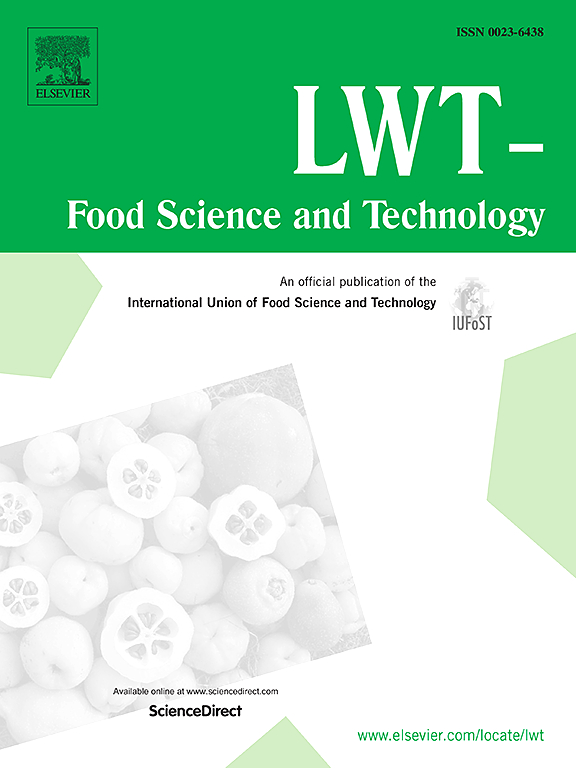A disposable paper-based electrochemical biosensor for detection of aflatoxin B1 based on a structure-switching aptamer
IF 6.6
1区 农林科学
Q1 FOOD SCIENCE & TECHNOLOGY
引用次数: 0
Abstract
Aflatoxin B1 (AFB1) is a highly toxic mycotoxin that readily contaminates major food crops. This study presents a novel ratiometric electrochemical paper-based aptasensor for AFB1 detection that utilizes a structure-switching aptamer. The sensor detects AFB1 by folding the DNA aptamer, reducing the electron transfer efficiency between the methylene blue (MB) molecules attached to the DNA and the electrode surface. An inner reference element modified with ferrocene (Fc) is co-assembled on the electrode surface of the paper-based biosensor to enhance the accuracy of AFB1 detection. In the presence of target AFB1, a folded target–aptamer complex is formed, distancing the MB molecules from the electrode and generating a low current signal in a differential pulse voltammetry mode. The ratio of oxidation currents for MB and Fc serves as the metric for monitoring AFB1 levels. The detection range spans from 20.0 to 1000.0 ng mL−1, with a limit of detection of 7.6 ng mL−1. The paper-based aptasensor exhibits excellent specificity and stability. Additionally, its high reliability and applicability are validated by the strong correlation observed between the sensor results and the results obtained using UPLC−MS/MS analysis of real samples. This study offers a low-cost, readily available approach for portable detection of foodborne hazards.
基于结构转换适配体的检测黄曲霉毒素 B1 的一次性纸基电化学生物传感器
黄曲霉毒素 B1(AFB1)是一种剧毒霉菌毒素,很容易污染主要的粮食作物。本研究提出了一种新型的比率电化学纸基适配体传感器,利用结构转换适配体来检测 AFB1。该传感器通过折叠 DNA 合酶来检测 AFB1,从而降低附着在 DNA 和电极表面的亚甲基蓝(MB)分子之间的电子传递效率。用二茂铁(Fc)修饰的内参比元件共同组装在纸基生物传感器的电极表面,以提高 AFB1 检测的准确性。在存在目标 AFB1 的情况下,会形成一个折叠的目标-aptamer 复合物,从而拉开 MB 分子与电极的距离,并在差分脉冲伏安模式下产生低电流信号。甲基溴和 Fc 的氧化电流比是监测 AFB1 水平的指标。检测范围为 20.0 至 1000.0 纳克毫升-1,检测限为 7.6 纳克毫升-1。这种纸质灵敏度传感器具有极佳的特异性和稳定性。此外,该传感器的检测结果与对真实样品进行 UPLC-MS/MS 分析所获得的结果之间具有很强的相关性,这也验证了它的高可靠性和适用性。这项研究为便携式检测食源性危害提供了一种低成本、随时可用的方法。
本文章由计算机程序翻译,如有差异,请以英文原文为准。
求助全文
约1分钟内获得全文
求助全文
来源期刊

LWT - Food Science and Technology
工程技术-食品科技
CiteScore
11.80
自引率
6.70%
发文量
1724
审稿时长
65 days
期刊介绍:
LWT - Food Science and Technology is an international journal that publishes innovative papers in the fields of food chemistry, biochemistry, microbiology, technology and nutrition. The work described should be innovative either in the approach or in the methods used. The significance of the results either for the science community or for the food industry must also be specified. Contributions written in English are welcomed in the form of review articles, short reviews, research papers, and research notes. Papers featuring animal trials and cell cultures are outside the scope of the journal and will not be considered for publication.
 求助内容:
求助内容: 应助结果提醒方式:
应助结果提醒方式:


